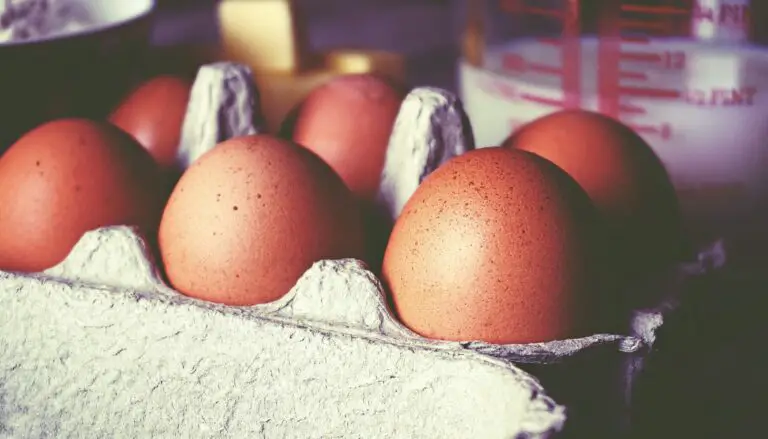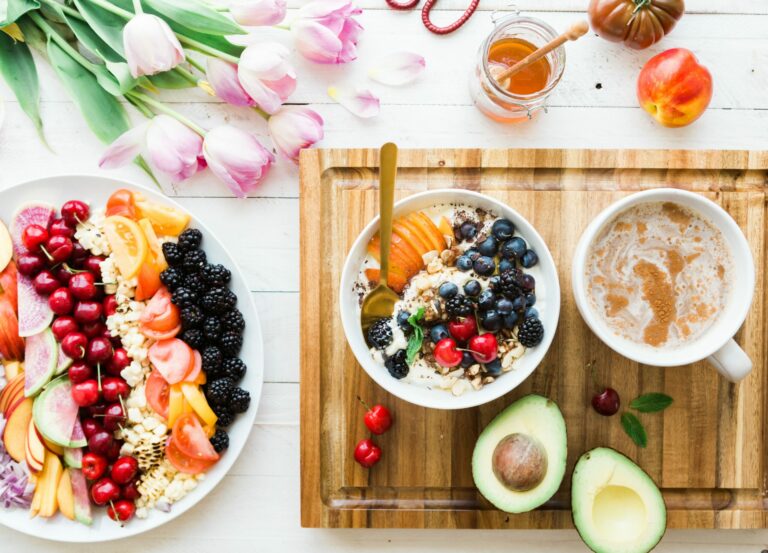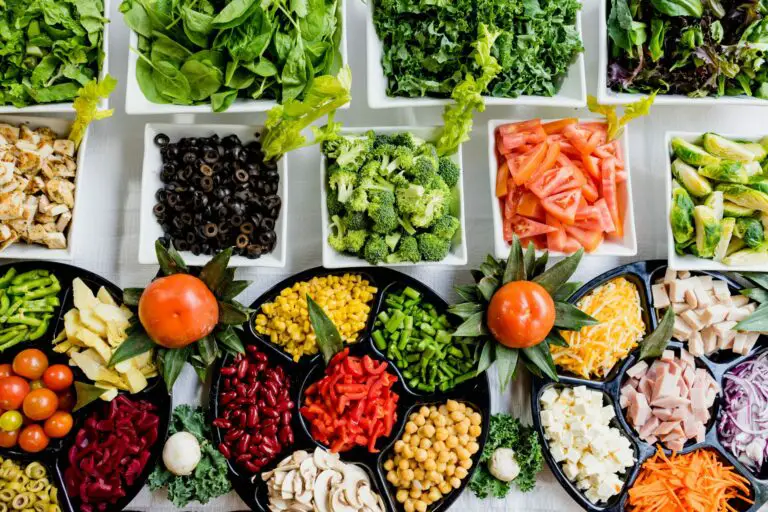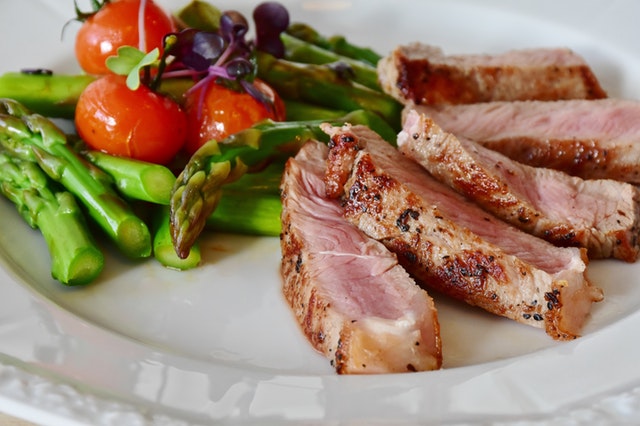How to Start a Keto Diet: 6 Steps for Beginners
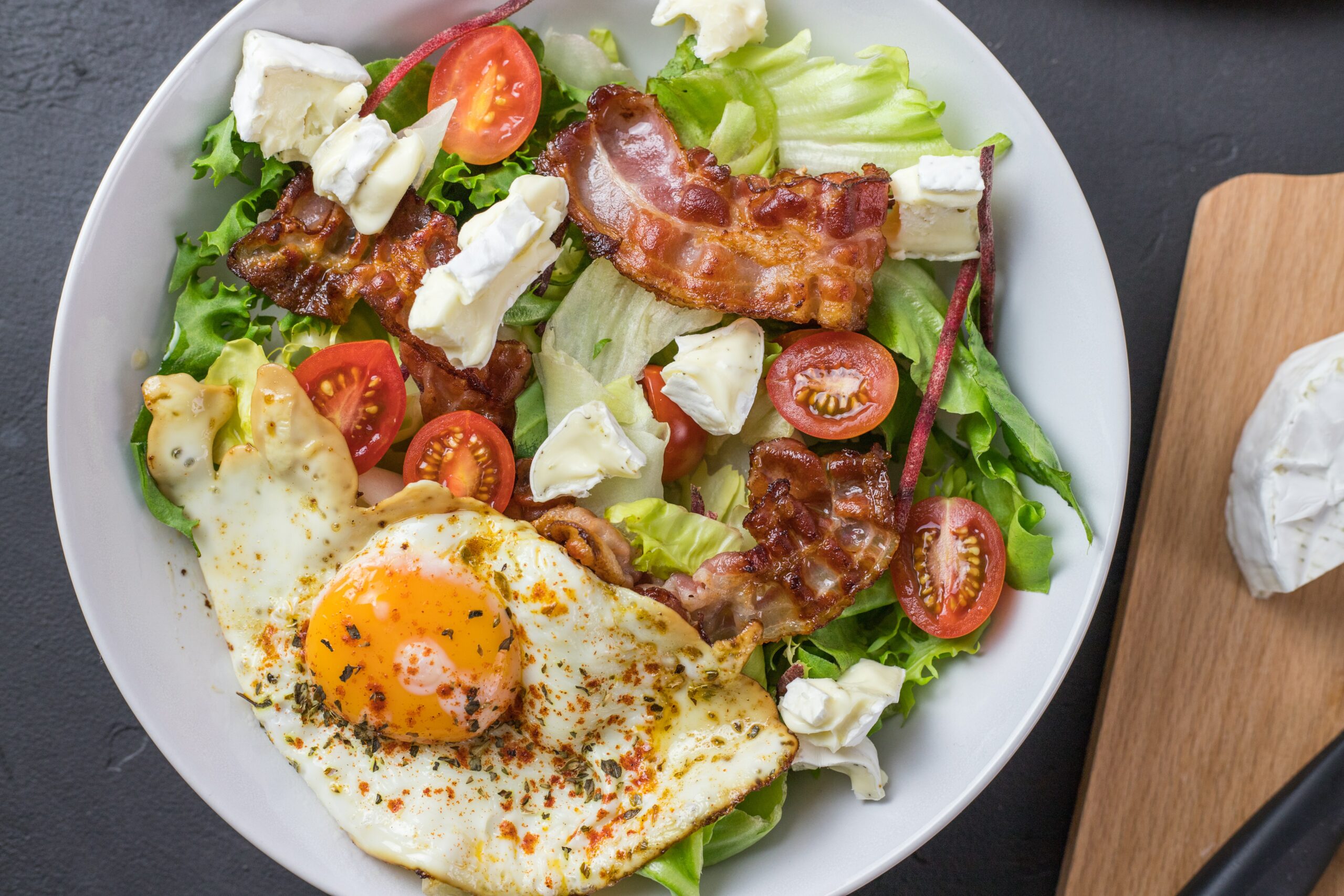
This article will provide you with the steps on how to start a keto diet for beginners.
What is the Ketogenic Diet?
The ketogenic diet is a low-carb diet where carbohydrates are replaced with fat. The low consumption of carbohydrates puts your body into ketosis. In a normal diet, our main energy source is carbohydrates, but in the Ketogenic diet, the main source of energy is fat. When the body doesn’t have enough carbohydrates to burn for energy, it uses fat and makes acids called ketones which it can use for fuel. Therefore, when you go into ketosis your metabolism shifts and relies on fat for energy and your body can burn fat at a higher rate.
In a ketogenic diet, carbs from fruits, vegetables, grains, milk, and yogurt are restricted; and the level of carbohydrate consumption is kept below 50 grams per day.
Ketosis is a body condition, where our bodies are burning fat rather than sugar, as the primary fuel source. The sugar our bodies usually burn is glucose, which is produced from the carbs we eat. Any extra glucose is stored either in the liver or the muscles as glycogen or converted to fat for storage. By lowering carbohydrate intake, insulin hormone levels also drop, and we reprogram our metabolism to shift into fat-burning mode. When we eat a low-carb diet and high fat intake we go into ketosis where the body burns fat and believe it or not the stubborn fat around the belly is the first one to go.
How Does Ketogenic Diet Work?
The ketogenic diet is different from healthy eating recommendations because the carbohydrate portion is high in a normal diet. A ketogenic diet activates your fat metabolism system. Ketosis is a metabolic state in which the body uses fat for fuel. It reduces the consumption of carbohydrates and limits the supply of glucose, which is the energy source of cells.
It is effective when entering ketosis after 3 to 4 days by breaking down protein and fat to lose weight. At this stage, you are in ketosis and then continue this diet for a short duration. It would help if you took care of your protein consumption because protein can convert into glucose slowly.
Another important thing that you must keep in mind is the short-term diet for weight loss because the long-term use of a ketogenic diet can cause severe consequences. It is used for epilepsy patients. According to the American Epilepsy Society, most of the daily calories come from fat from eating cheese, butter, eggs, nuts, salmon, and olive oil in children.
History of Ketogenic Diet
The Ketogenic diet became familiar in the 1920s and 30s for epilepsy.(1) It provides alternative non-mainstream fasting and has demonstrated success. The diet was introduced particularly for epilepsy children to manage the condition Fasting for disease treatment is an old method introduced by ancient Greek physicians and Indian physicians. Hippocratic corpus defined how alterations in diet played a role in epilepsy management. The first study to treat epilepsy was conducted in France in 1911. At that time, Potassium bromide was used to treat epileptic patients, but it also slowed down their mental capabilities. After that, a low-calorie, vegetarian diet was given to epileptic patients, only two showed significant results, and the other could not adhere to the dietary restrictions. However, the diet was effective compared to potassium bromide because it improved the patients’ mental capabilities.
In the 20th century, an American, Berner McFadden, gave the idea of fasting to restore health. His student named, Hugh Conklin, introduced the fasting treatment method to control epilepsy. According to him, seizures are caused by toxins that secrete in the intestine, and he suggested fasting for 18 to 25 days to improve the condition. So, this fasting therapy was made mainstream therapy for epilepsy in 1916. The endocrinologist Rollin Woodyatt noted three water-soluble compounds, acetone, β-hydroxybutyrate, and acetoacetate, produced by the liver due to starvation called ketone bodies. These were rich in fat and low in carbohydrates.
Russel Wilder from Mayo Clinic named it Ketogenic Diet and used it to treat epilepsy in 1921.
Further research was held in the 1960s, in which it was seen that ketones are produced by medium-chain triglycerides and quickly transported to the liver via the hepatic portal vein. Peter Huttenlocher further said that 60 % of calories came from MCT oil in 1971. So, he said that parents could include protein and carbohydrate portions in the ketogenic diet to prepare more enjoyable meals.
Historically The following foods could be added to the ketogenic diet
- Non-starchy vegetables like cabbage, broccoli, cauliflowers, peppers, and onions.
- Yogurt, cheese products, and milk products are included.
- Fish, poultry, eggs, soybean, and shellfish could be added to the protein portions.
- Walnuts, sunflowers, pumpkin seeds, almonds.
- Fats from plants and animal sources
- Fruits like berries, avocado, rhubarb, and coconut.
In the initial stage, doctors emphasize the importance of precise measurements for accurate results. However, it was also observed that fasting for treating epilepsy could not be longer. Patients can use it for 10-15 days.
Well, People ask how it exactly works. Scientists are not sure, and the primary theory is the natural structure of ketones has an anti-electric effect on the brain. Abnormal electric impulses trigger seizures; therefore, the keto diet can control and prevent seizures from occurring. Children treated with diet became less irritable and easier to discipline. They slept better at night and seemed more energetic.
Despite the proven success of the ketogenic diet, anticonvulsant drugs were developed and became the treatment for epilepsy patients. Some people do not use it correctly and get worse results. However, the keto diet is a proven technique to treat epilepsy in history.
Is Keto Diet Safe to Use?
Many people ask about how much time it takes for the ketogenic diet to show results. Some researchers suggest that people feel less hungry in ketosis and therefore eat less. Thus, the keto diet became popular in the general population. Once you get to the ketosis state, it is easy to follow, but it depends on your daily activity.
Many people ask if it is safe to use the ketogenic diet or not. It is not recommended for some people who are suffering from pancreatic disease, liver conditions, thyroid problems, gallbladder disease, and diabetes. Besides, in normal people, it has some health risks such as in the short term, flu-like symptoms, upset stomach, headache, and fatigue are included. This state is called keto flu.
Moreover, cutting from fiber also increases the chance of constipation. In long-term health risks, kidney stones, liver disease, and malnutrition are common. We limit carbs, which have a large number of minerals and vitamins.
Some studies also show that high saturated fat can increase the chance of heart disease and other chronic problems. Therefore, the ketogenic diet is not recommended for a long-term duration.
The ketogenic diet is quite restrictive because of some health risks. The diet is mostly used for epilepsy patients, but now people are using it for losing weight. No doubt it can lose weight quickly, but you need to manage carbohydrates, protein, and fat portions correctly so that your daily needs can be fulfilled according to ketosis.
How the ketogenic diet helps you lose weight
The ketogenic diet will help you lose weight, maintain muscle mass, and improve your health. The restriction in the consumption of carbohydrates forces your body to use fat for energy. In this way, it allows you to lose weight more quickly. The keys to this diet are as follows:
- Elimination of carbohydrates from the diet, keeping the body’s carbohydrate stores almost empty, prevents too much insulin from being released during meals
- With less insulin, the body begins to burn body fat and this helps to lose weight quickly
- Not only does it burn the fats you eat, but the body fat
The ketogenic diet will help you burn fat, reduce calorie intake, and feel satisfied without hunger compared to other common diets. The first thing we must do to lose weight is to limit the consumption of carbohydrates. The percentage of fat, protein, and carbohydrates that you should consume varies from person to person, but in general, the amounts are as follows:
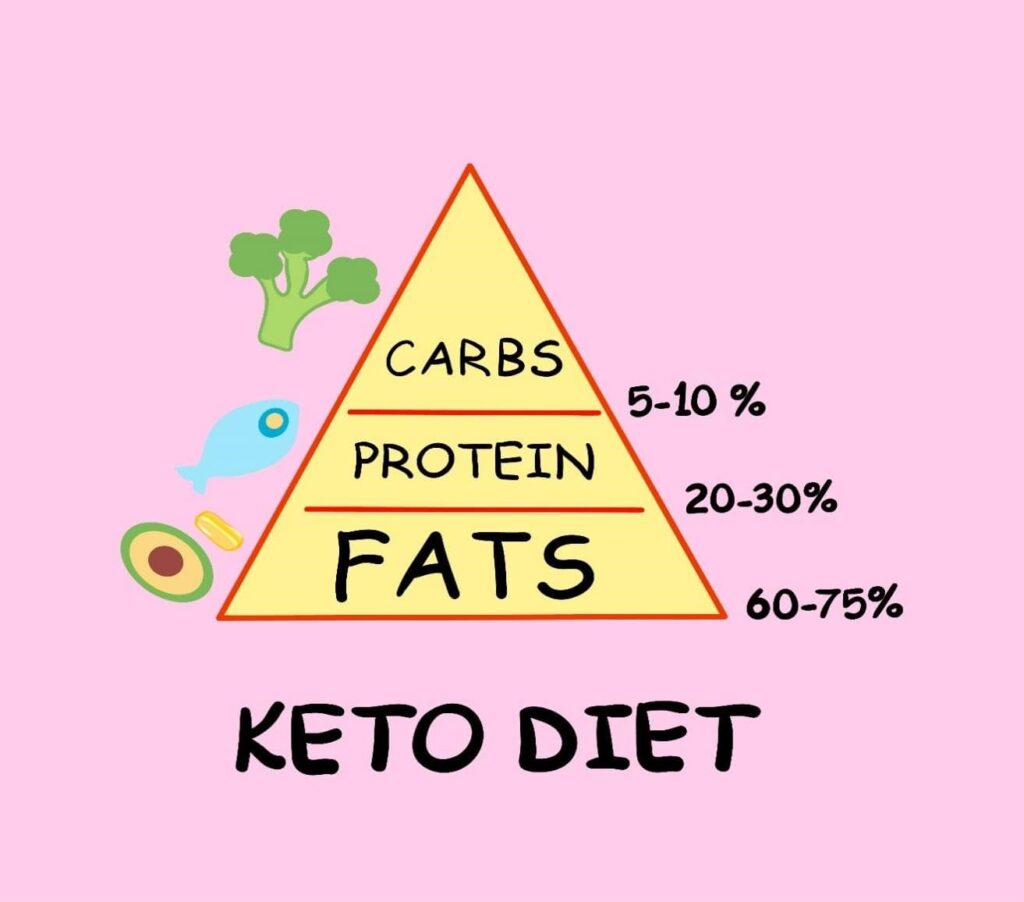
60-75% calories from fat
15-30% of calories from protein
5 – 10% of calories from carbohydrates
The signs that you are in ketosis (burning fat) will appear after a week of dieting. For some people, this takes between 1 and 3 months.
How to measure Ketones
There are three types of ketones, also called ketone bodies:
- Beta-hydroxybutyrate (BHB)
- Acetoacetate
- Acetone
You can take a few tests to find out if you are in ketosis. Remember that it takes a while for the body to get into ketosis. The first test and the most inexpensive is to use keto strips. You can get them in health food stores or pharmacies, and you can measure the ketones in your urine. This test measures one type of ketone, which is called acetoacetate.
However, if you keep doing the keto diet after a month the ketones from the urine will eventually go away (acetoacetate) it can be misread as a sign that you are not burning fat. The truth is that the body has adjusted to fat-burning mode. Therefore, if you want to keep measuring the ketones in your body you can use a and it will start producing mainly the 2 other ketones: Acetone and beta-hydroxybutyrate which can be measured with a ketone breath analyzer. Many nutritionists and dietitians recommend testing ketones daily.
I will suggest you pay attention to energy levels, appetite, sleep, body weight, and other health metrics first—and ketones second.
How To Start The Keto Diet : The 6 Steps
Let’s take a look at the 6 steps to start the keto diet.
Step One: Calculate the Macronutrient Ratio
You’ll need to calculate your macronutrient goals based on your individual needs. Typically, you’ll want to aim for a diet that consists of around 70-75% fat, 20-25% protein, and 5-10% carbohydrates. You can use an online calculator to help you figure out your individual needs based on your age, weight, height, and activity level.
There is a method called the Mifflin-St Jeor formula that performs the calculation as follows:
Men: 10 x weight (kg) +6.25 x height (cm) – 5 x age (years) + 5
Women: 10 x weight (kg) +6.25 x height (cm) – 5 x age (years) – 161
Let’s look at an example
A woman who weighs 72.7 kg, is 30 years old, and is 165.1 cm tall.
The formula is: (10 x 72.7kg) + (6.25 x 165.1cm) – (5 x 30 years) – 161 = 1448 calories per day
Let’s now calculate the percentage of daily carbohydrates, fat, and protein
Calculation of percentage of daily carbohydrates
To calculate the number of daily carbohydrates
Multiply 7% by the total number of calories = 7% of 1448 is 101.30
Divide calories by 4: Because carbohydrates contain 4 calories per gram. So: 101.30 x 4 = 25 g of daily carbohydrates
When counting carbs you should pay attention to net carbs, not total carbs. If a meal contains 10 g of carbohydrates, but 7 g is from fiber, the total net carbohydrate is 3 g. So, you should count the 3 g instead of the 10 g
How to calculate net carbs:
The total carbohydrate for a meal is usually listed in the bottom half of the Nutrition Facts label, after grams (g) of fat, cholesterol, sodium, and potassium.
Subtract the number of grams (g) of fiber from the total grams (g) of carbohydrates.
Daily Fat Percentage Calculation
To calculate the fat, you can consume in grams, multiply the number of calories you need (1448) by 75% and then divide by 9 (fat contains 9 calories per gram)
75% of 1448 = 1086
1086 divided by 9 = 121 g of daily fat
Calculation of the percentage of daily protein
Calculate 18% of total calories = 260.64
Divide this total: 377 by 4 (because protein contains 4 calories per gram) = 65 g daily calories
In this example, we have concluded that this person (A woman who weighs 72.7 kg, is 30 years old, and measures 165.1 cm) needs to eat 1448 calories per day and these should consist of 25 g of carbohydrates, 121 g of fat and 65 g of protein daily.
It’s important to check the carbohydrate content of everything you eat, especially processed foods like cheese or hot dogs. Some foods have, so to speak, hidden carbohydrates that serve to preserve the products. So be sure to shop for low-carb options to ensure you don’t exceed the recommended daily limit.
Avoid low-fat foods. Because you’re not eating a lot of carbs, you want to make sure you’re eating enough fat so you have enough energy to prevent your metabolism from slowing down because your body thinks it’s starving due to low carb intake.
This means, for example, eating the skin on chicken, using lard or cooking oil, and eating cheese and mayonnaise. Drink lots of water. You can have coffee, but don’t go overboard with sugar and milk. You can take sweeteners and instead of milk take cream, or almond milk or you can even put butter in your coffee.
Step 2: Clean your pantry, freezer and fridge
- Throw away or give away all your pre-packaged food. All the packaged, processed foods are in a bag or box. By
- Give away all the pasta, bread, Bagels, pretzels, chips, cereal, cookies, or frozen desserts.
- Get rid of all your wheat flour, grains, Rye, oats corn, including popcorn, barley, rice, brown rice, beans, peas, hummus, and lentils dried or in a can.
- Get rid of unhealthy oils and fats like any margarine, soy, and oils like sunflower, cottonseed, canola, soybean, corn, grapeseed, or safflower., canned goods. Foods in metal cans especially canned vegetables, all sugar, and artificial sweeteners because they are unhealthy and they mess with your appetite hormones.
- Give away all dairy products, other than hard cheeses, heavy whipping cream, cream cheese, and grass-fed butter. All other Dairy should go for now because of the high carbohydrate content. Also, it’s best to choose organic Dairy consuming it every 3 to 4 days, not every day.
- Anything you have labeled low-fat or fat-free is especially bad for you because of the added sugar and almost always will throw you out of ketosis so get rid of them. – Sauces and condiments Most of them, like ketchup, have tons of sugar so entirely read the label and use very small amounts.
- Give away or throw away all the sodas, energy drinks, sports drinks, smoothies, and juices, including all-natural fruit juices. Fruits like bananas, grapes, mangos, oranges, peaches, pears, pineapple, and plums even though they are healthy and taste amazing they have too much sugar and you will not be able to stay in ketosis. The same happens with dried fruits. – Jams, jellies & preserves have way too much sugar as well.
- Except for the stevia-sweetened dark chocolate (85% cacao), no candy works with a keto diet, at least when we start. – Also, vegetables like carrots, potatoes, beets, sweet potatoes, yams, acorn squash, butternut squash all have to go because they are all starches.
Step 3: Plan your meals
Make a list of keto-friendly foods you enjoy and plan your meals accordingly. Your meals should be rich in healthy fats, moderate in protein, and low in carbohydrates. Some examples of keto-friendly foods include meat, fish, eggs, nuts, seeds, low-carb vegetables, and healthy fats such as olive oil and avocado.
What are the Best Foods to Eat on a Ketogenic Diet?
Are you looking to get on a Ketogenic diet and don’t know where to start? This post will help you discover the best meals to eat on a Keto diet. It’ll also cover meals you shouldn’t eat, to avoid learners’ mistakes.
- Avocados
Avocados are well-deserving of their name, ‘superfoods,’ because they are loaded with potassium and other important minerals and vitamins. Studies show that avocados can help lower cholesterol levels by 22 percent.
Avocados are delicious and packed full of nutrients but contain only 2 grams of net carbohydrates. Add them to your sandwiches and salads, and enjoy.
- Coconut Oil
Coconut oil is one of the healthiest oils and another superfood as far as nutritionists are concerned. It can be used instead of vegetable oil or butter. You can also use it when sautéing or frying. Coconut oil is great for diabetic patients and those with Alzheimer’s disease.
- Dairy products
Cottage cheese and yogurt are two dairy products that are great for a Keto diet. They are low in carbohydrates, rich in calcium and protein, and also high in fat, which supplies energy.
Always stick with plain yogurt because flavored variants often contain added sugar. Don’t go after low-fat yogurts as well. Add flavor to your cottage cheese and yogurt with nuts and berries.
- Dark Chocolate
Dark chocolate is so rich in antioxidants that people are considering it a superfood. There are 10 grams of carbohydrates in one ounce of 80 percent dark chocolate, making it a healthy snack. Chocolate containing 80 percent cocoa powder or more can lower blood pressure.
The lower the amount of cocoa, the less healthy the chocolate. Please note that milk chocolate is not healthy for you.
- Eggs
Eggs are rich in protein and very low in carbs, making them ideal for a keto diet. With only 1 gram of carbohydrates in eggs and lots of protein, you can rest assured that it is healthy. Eggs are also very satisfying, so you’ll eat less when you eat eggs.
Don’t eat only egg whites because the main nutrition is in the yolk. So, eat the whole egg for the best benefit.
- Meat and Poultry
Meat is a major part of the keto diet because most meats contain few carbs and lots of protein that supports muscle building. As much as possible, eat grass-fed meats because they are healthier and richer in fatty acids.
- Seafood
Seafood contains many minerals, vitamins, and healthy fatty acids, but many of us don’t consume adequate amounts. The keto diet is big on seafood consumption, including crabs, shrimp, and other shellfish with low amounts of carbohydrates.
Fatty fish like sardines and salmon are high on the list of recommended foods because they are rich in omega fatty acids. Having two or more servings of seafood, including simple canned tuna is a good way to go.
- Vegetables
The keto diet recommends unlimited leafy green vegetables because they are filled with antioxidants, vitamins, and fibers. They are also low in carbohydrates.
Green vegetables like kale, spinach, and broccoli can reduce the risk of cancer and heart disease. Cook turnips and Cauliflower instead of rice and potatoes for fewer starch and carbs.
The following list is the most common foods you can enjoy in a ketogenic diet.
- Beef
- Chicken
- Pork
- Duck
- Goose
- Lobster
- Scallops
- Lamb
- Crab
- Sausage
- Quail
- Fish (salmon)
- Shrimp
- Veal
- Dairy
- Cream cheese
- Eggs
- Cottage cheese
- Blue cheese dressing
- Mozzarella cheese
- Provolone cheese
- Cheddar cheese
- Ricotta cheese
- Unsweetened almond milk
- Unsweetened coconut milk
- Heavy cream
Fruits And Vegetables
- Asparagus
- Avocados
- Bell peppers
- Cabbage
- Cauliflower
- Celery
- Cucumber
- Cranberries
- Blueberries
- Strawberries
- Blackberries
- Lemons
- Limens
- Mushrooms
- Salad Greens
- Tomatoes
- Zucchini
- Pickles
- Radishes
- Herbs
Nuts and Seeds
- Almonds
- Chia Seeds
- Pecans
- Flaxseeds
- Pumpkin seeds
- Sesame seeds
- Wal mats
Step 4: Foods to Avoid
Foods to Avoid on a Ketogenic Diet
It is important to know what you can’t eat on a keto diet because the diet has many restrictions.
- Sugars
Avoid sugars and sweeteners. But you can make a keto-friendly sweet dessert using unsweetened apples for baking instead of sugar. Always use substitute sweeteners moderately.
Although fruits are healthy, they contain lots of sugar, so don’t eat more than a few slices daily. Fruit juices have extremely high sugar content, and contain vitamins, but don’t have sufficient fiber. Opting for green juices with little or no flavors and fruits is best.
- Cereals
Most cereals you find have very few nutrients and too much sugar. Even those described to have added nutrition can’t be trusted because if the nutrition wasn’t removed in the first place, is there any need to add nutrients?
Add 100% bran cereal to your keto diet, and then sweeten it with berries tricky. Don’t forget that honey counts as sugar, too, so take note when studying the nutrient packs.
- Starch
Take away white starches from your diet completely because they are all empty calories. These white starches include rice, pasta, and white bread. Instead, get the wholegrain version of these foods and eat in moderation.
The following list includes the most common foods to avoid in a ketogenic diet.
- Almond Milk sweetened
- Soy milk
- Yogurt regular
- Coconut milk sweetened
- Cashews
- Pistachios
- Apples
- Apricots
- Bananas
- Beans
- Eggplant
- Dates
- Cantaloupe
- Cherries
- Grapes
- Kiwis
- Mangos
- Oranges
- Most of the fruits
- Potatoes
- Sweet potatoes
- Rice
- Yams
- Bread
- Pasta
Step 5: Other important things to do on the Keto diet
- Always Hydrate
Drink plenty of water because the keto diet will lower your insulin level. This can make your kidneys release more liquid. Drinking plenty of water will help you achieve a healthy balance.
- Clear out your pantry
Empty your pantry of all carbohydrates and sugars. Pack all the items and meals you won’t be eating into a box and give them away. You might have strong willpower, but getting temptation out of the way is always best.
If you live with people who are not on the keto diet, have them refrain from eating carbs and sugars around you, as well as other restricted meals.
- Check your weight
You don’t have to lose all the weight at once. You might first add weight before you lose some. This is because when your body converts fats to healthy muscles, the muscles might add to your weight. However, things would eventually begin to go down.
If you’re using the keto diet to lose weight, measure your starting weight and then monitor your progress once a week.
- Monitor Your Ketone Level
Always be aware of how your body responds to the keto diet when you begin. The simplest way to do this is with a urine test. You can also use a blood ketone meter for your measurement. It is best to do these tests early in the morning.
Step 6: Start tracking your food intake
It’s important to track your food intake to ensure that you’re staying within your macronutrient goals. You can use a Ketogenic Journal to track your food intake and make sure that you’re staying on track.
Remember, before starting any new diet, it’s important to consult with a healthcare professional, especially if you have any underlying health conditions. The ketogenic diet is not suitable for everyone, and it’s important to make sure that it’s safe for you before getting started.
Ketogenic Diet Recipes

Me encanta cocinar y escribir, tengo un Certificado de Nutrición de Inicio y un diploma de Nutrición Completa acreditado por CTAA y una Certificación de Entrenador de Salud de Nutrición Keto. Creo firmemente que comer sano es la clave para vivir una mejor calidad de vida. He tomado un curso de Terapia Nutricional que me ha dado las bases para comer saludablemente.


